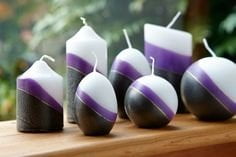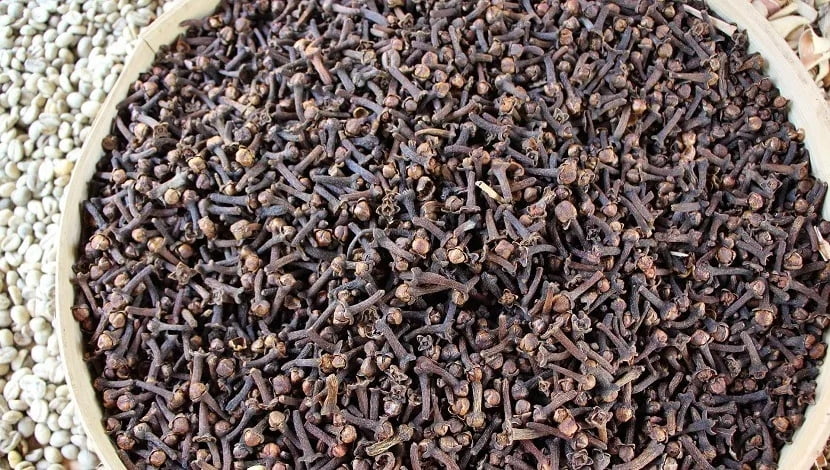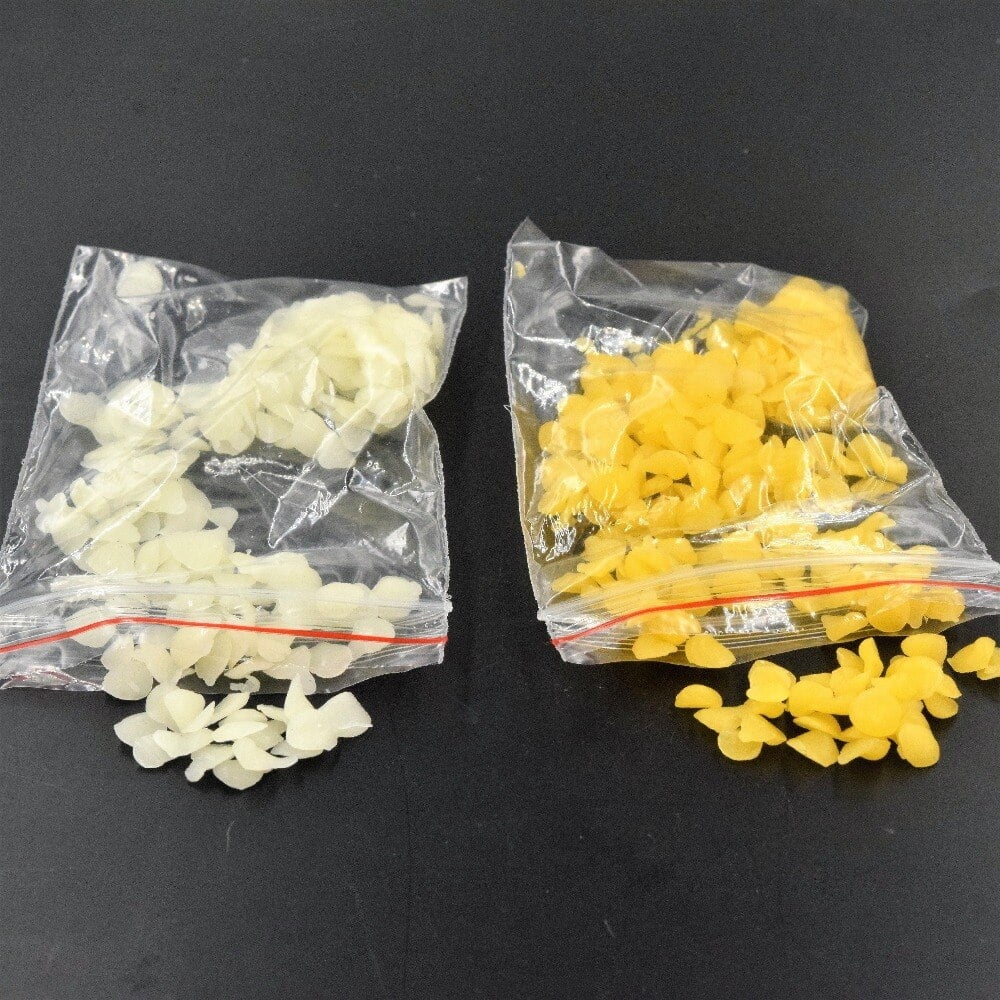When it comes to crafting candles, choosing the right wax is essential. Wax not only determines the quality and longevity of the candle but also plays a crucial role in its aesthetics and fragrance. Among the various types of wax available in the market, paraffin wax has gained significant popularity over the years.
But is paraffin wax good for making candles? In this article, we will explore the advantages and disadvantages of using paraffin wax in candle making, address common misconceptions about its usage, discuss potential health hazards, explore alternative options, and provide helpful tips and tricks for creating beautiful candles.
Before delving into the specifics of paraffin wax, it’s important to understand the basics of candle making. The choice of wax is vital as it affects numerous aspects of the final product. From texture to scent throw, each type of wax offers unique properties that can greatly enhance or hinder your candle-making experience. As such, it becomes crucial to have a comprehensive understanding of different waxes available in the market.
Paraffin wax is one such type that has become immensely popular among candle makers. Derived from petroleum refining process, this translucent white wax possesses several qualities that make it desirable for crafting candles. In addition to its affordable price tag and easy availability, paraffin wax boasts a high melting point and excellent ability to retain fragrance.
These characteristics allow for long-lasting candles with strong scents that fill any space effectively. However, while paraffin wax enjoys widespread usage and acclaim, there are also concerns regarding its potential toxicity and environmental impact.
In this article, we will delve into these topics in detail while also exploring alternative options such as soy, beeswax, and palm wax. By examining all aspects surrounding paraffin wax in candle making – from safety measures to consumer preferences – we hope to equip readers with valuable information needed to make an informed choice when it comes to their own candle-making endeavors.
Whether you are a novice looking to start your candle-making journey or an experienced artisan seeking to explore new wax options, this article aims to provide comprehensive insights into the question: Is paraffin wax good for making candles?
What is Paraffin Wax?
Paraffin wax is a popular choice for making candles due to its unique properties and availability. It is a white, odorless solid derived from petroleum or coal shale. Paraffin wax has been used in candle making for centuries and continues to be a preferred option among candle makers.
One of the reasons for paraffin wax’s popularity is its high melting point. This allows candles made with paraffin wax to burn longer and more evenly compared to other waxes, resulting in a longer-lasting candle. Additionally, paraffin wax has the ability to retain fragrance well, ensuring that the scent of the candle remains strong throughout its burning time.
Another advantage of using paraffin wax is its cost-effectiveness and easy availability. Paraffin wax is relatively inexpensive compared to other types of waxes used in candle making, making it more accessible for both hobbyists and professionals. In addition, it can be easily found in various forms such as blocks or pellets at craft stores or online suppliers.
The versatility of paraffin wax also makes it a preferred choice for creating various candle designs. Paraffin wax can be easily colored using dyes and manipulated to create different textures and patterns. It can be poured into molds or used for container candles, allowing candle makers to unleash their creativity and produce unique designs.
Advantages of Using Paraffin Wax for Making Candles
Paraffin wax is a widely used material in candle making due to its numerous advantages. This section will discuss the benefits of using paraffin wax for making candles, including its high melting point and ability to retain fragrance, cost-effectiveness and easy availability, as well as its versatility in creating various candle designs.
High Melting Point and Ability to Retain Fragrance
One of the main advantages of using paraffin wax for making candles is its high melting point. Paraffin wax has a higher melting point compared to other waxes used in candle making, which means that candles made from paraffin wax will have a longer burn time. This allows for longer-lasting candles that provide hours of fragrance and ambiance.
In addition, paraffin wax has the ability to retain fragrance better than other types of waxes. When scented oils or essential oils are added to the melted paraffin wax, it absorbs and holds onto these fragrances effectively. As a result, candles made from paraffin wax tend to have stronger and longer-lasting scents compared to those made from other materials.
Cost-Effectiveness and Easy Availability
Another advantage of using paraffin wax for making candles is its cost-effectiveness and easy availability. Paraffin wax is relatively inexpensive compared to other types of waxes used in candle making, making it an affordable option for both homemade and commercial candle production.
Furthermore, paraffin wax is widely available in craft stores, online retailers, and even some grocery stores. This accessibility ensures that candle makers can easily source this material without any difficulty. The wide availability of paraffin wax also provides more options for candle makers to experiment with different colors, additives, and fragrances to create unique candles.
Versatility in Creating Various Candle Designs
Paraffin wax offers great versatility when it comes to creating different candle designs. It has a low shrinkage rate, which allows for smoother and more even surfaces on the candles. This makes paraffin wax ideal for creating pillar candles, votive candles, and other types of molded or free-standing candles.
Additionally, paraffin wax can be easily colored using dye chips or liquid candle dyes, allowing candle makers to customize the colors of their candles according to their preferences or seasonal themes. Its ability to hold intricate details when poured into molds also makes it a popular choice for creating beautifully shaped candles.
Overall, the advantages of using paraffin wax in candle making include its high melting point and fragrance retention, cost-effectiveness and easy availability, as well as its versatility in creating various candle designs. These qualities make paraffin wax an excellent choice for those looking to create long-lasting candles with strong scents and unique designs.
However, it is important to consider potential health hazards and safety measures associated with paraffin wax usage, as well as explore alternative waxes that may align better with eco-friendly preferences and concerns.
Common Misconceptions about Paraffin Wax
Paraffin wax has been a popular choice for candle making for many years, but there are several misconceptions surrounding its use. In this section, we will address some of the common concerns and myths about paraffin wax.
One prevalent misconception is that paraffin wax is toxic and harmful to one’s health. However, it is important to note that paraffin wax used in candles undergoes a refining process that removes impurities and potential toxins. When burned properly, paraffin wax candles do not release harmful substances into the air. It is essential to use quality candles made with pure paraffin wax from reputable manufacturers to ensure safety.
Another misconception is related to the environmental impact of paraffin wax. Some people believe that its production contributes to deforestation or pollution.
However, the majority of paraffin wax used in candle making comes from crude oil, which is derived from non-renewable resources. While it is true that the extraction and refining processes of crude oil can have negative environmental effects, using paraffin wax as a byproduct helps reduce waste and ultimately has a lower carbon footprint compared to other types of waxes.
It is also important to debunk the myth that all-natural alternatives like soy or beeswax are always better options than paraffin wax. While soy and beeswax candles have gained popularity in recent years due to their renewable sources and eco-friendly image, they do have their drawbacks as well. Soy candles tend to have a lower scent throw compared to paraffin candles, meaning they may not fill a room with fragrance as effectively.
Beeswax candles can be expensive and may have limitations in terms of color options due to natural variations. Ultimately, the choice between different types of waxes depends on personal preferences and priorities.
Potential Health Hazards and Safety Measures
When using paraffin wax for making candles, it is important to be aware of the potential health hazards associated with its usage. While paraffin wax is generally considered safe for candle making, there are a few risks that should be kept in mind.
One potential health hazard of paraffin wax is the release of harmful fumes when it is burned. When candles made from paraffin wax are lit, they can emit small amounts of volatile organic compounds (VOCs) into the air.
Some studies have linked long-term exposure to these VOCs with respiratory issues and other health concerns. However, it is worth noting that the amount of VOCs released by paraffin wax candles is generally considered low and unlikely to cause significant harm unless there is prolonged exposure in an enclosed space.
To mitigate the potential risks associated with burning paraffin wax candles, safety measures can be implemented. Firstly, it is important to burn candles in a well-ventilated area to allow for proper air circulation and reduce inhalation of any fumes or pollutants. It is also advisable not to burn candles for extended periods of time and to extinguish them if you notice excessive smoking or soot formation.
Additionally, it is crucial to handle and melt paraffin wax safely. When melting the wax, always do so in a double boiler or a dedicated melting pot specifically designed for candle making. Avoid heating the wax directly on stovetops or open flames as this may pose a fire hazard. It is also recommended to use heat-resistant gloves and goggles while handling hot wax to protect yourself from burns.
Overall, while there are potential health hazards associated with using paraffin wax for making candles, taking appropriate safety precautions can minimize these risks significantly.
| Potential Health Hazards | Safety Measures |
|---|---|
| Release of harmful fumes | – Burn candles in well-ventilated areas
|
| Risk of fires | – Use dedicated melting pots or double boilers for wax melting
|
Alternatives to Paraffin Wax
Exploring Other Types of Waxes Suitable for Candle Making
In recent years, there has been a growing demand for alternative waxes in candle making due to concerns about the environmental impact and potential health hazards associated with paraffin wax. As a result, many candle makers and consumers have turned to other types of waxes that offer more sustainable and natural options. Some of the most popular alternatives to paraffin wax include soy wax, beeswax, and palm wax.
Soy wax is a vegetable-based wax that is made from the oil of soybeans. It has gained popularity among eco-conscious consumers because it is renewable, biodegradable, and non-toxic. Soy wax also has a lower melting point than paraffin wax, which means that candles made from soy wax tend to have a longer burn time. Additionally, soy wax has good fragrance retention, allowing for a pleasant scent throw when the candle is lit.
Beeswax is another natural alternative to paraffin wax. It is produced by honey bees and is known for its natural golden color and sweet honey-like scent. Beeswax candles have a long history and are valued for their clean-burning properties.
They produce very little soot or smoke when lit and have a warm glow that adds an inviting ambiance to any space. However, it’s important to note that beeswax can be more expensive compared to other waxes due to its limited availability.
Palm wax is derived from the oil palm tree and offers a sustainable option for candle making. It has become increasingly popular because it is biodegradable, renewable, and produces minimal soot when burned. Palm wax also has a high melting point and helps candles retain their shape even in warmer temperatures. However, concerns about deforestation related to palm oil production should be taken into account when considering this option.
Comparing the Pros and Cons of Using Soy, Beeswax, or Palm Wax
When deciding on an alternative to paraffin wax, it is important to consider the specific qualities and characteristics of each wax type. Here are some key factors to keep in mind when comparing soy wax, beeswax, and palm wax:
- Sustainability: Soy wax and palm wax are both renewable options that have a lower carbon footprint compared to paraffin wax. Beeswax is also considered sustainable as long as it is sourced from responsible beekeepers.
- Scent Throw: Paraffin wax is known for its ability to retain fragrance well. Soy wax also provides good scent throw, while beeswax and palm wax may have a milder scent profile.
- Price: Paraffin wax is generally the most cost-effective option among all waxes. Soy and palm waxes are usually priced slightly higher than paraffin wax, while beeswax can be significantly more expensive.
- Burn Time: Soy wax has a longer burn time compared to paraffin and other types of waxes due to its lower melting point. Beeswax also has a longer burn time but can be affected by factors such as wick size and candle shape.
Ultimately, the choice of an alternative wax will depend on individual priorities and preferences. It is recommended to experiment with different waxes and assess their performance in terms of burn quality, scent throw, appearance, and sustainability before settling on a preferred option.
Tips and Tricks for Using Paraffin Wax in Candle Making
When it comes to using paraffin wax in candle making, there are a few tips and tricks that can help you achieve the best results. First and foremost, it is important to melt the wax properly. Paraffin wax has a high melting point, typically between 120-160 degrees Fahrenheit (49-71 degrees Celsius). It is recommended to use a double boiler or a dedicated wax melter to ensure even heating and prevent scorching or overheating of the wax.
Another tip for using paraffin wax in candle making is to add fragrance oils at the appropriate temperature. Paraffin wax has excellent fragrance retention properties, but adding fragrance oils at too high of a temperature can cause them to evaporate quickly.
It is generally advised to add fragrance oils when the melted wax reaches around 180-185 degrees Fahrenheit (82-85 degrees Celsius). This allows for better scent diffusion and ensures that your candles will have a pleasant and long-lasting aroma.
In addition to fragrance oils, you can also incorporate other additives into your paraffin wax candles to enhance their appearance and performance. For example, you can use color dyes to create vibrant and unique candle designs.
It is important to use dyes specifically designed for candle making, as regular clothing dyes may not be suitable and can affect the quality of your candles. Additionally, you may consider using additives such as stearic acid or vybar to improve the opacity, hardness, burning time, and overall stability of your candles.
By following these tips and tricks, you can make the most out of using paraffin wax in candle making. However, it is always important to experiment and find what works best for your specific needs and preferences. Every candle maker has their own techniques and secrets that contribute to their unique creations. So don’t be afraid to get creative and have fun with your candle making journey.
Consumer Preferences and Market Trends
In recent years, there has been a shift in consumer preferences towards eco-friendly products, including candles. As a result, the candle-making industry is experiencing changes in market trends and demands. While paraffin wax has long been a staple in candle making, its popularity has faced challenges due to concerns about its potential environmental impact and toxicity.
Alternative options such as soy wax, beeswax, and palm wax have gained traction among environmentally-conscious consumers. These waxes are known for their renewable sources and lower carbon footprint compared to paraffin wax. Additionally, they offer unique qualities that appeal to different customers. For example, soy wax is popular for its clean burn and ability to hold fragrance well, while beeswax is favored for its natural color and scent.
However, despite the growing preference for eco-friendly alternatives, paraffin wax continues to dominate the candle market. This can be attributed to several factors. Firstly, paraffin wax remains the most cost-effective option for producing large quantities of candles. Its easy availability also makes it convenient for manufacturers on a larger scale. Furthermore, paraffin wax offers versatility in creating various candle designs due to its high melting point and ability to retain fragrance.
It’s worth noting that consumer preferences may vary depending on personal values and priorities. While some individuals prioritize eco-friendliness and are willing to pay more for sustainable candles made from alternative waxes, others may be more focused on affordability or specific design features. Ultimately, it’s important for consumers to make an informed choice based on their own preferences.
With increasing awareness about environmental issues and evolving consumer preferences, the candle-making industry is likely to continue adapting to market trends. The demand for eco-friendly alternatives will continue to shape product offerings and encourage innovation within the industry as companies strive to meet the changing needs of consumers. Whether or not paraffin wax remains a good choice for making candles will truly depend on the values and priorities of the individuals making the candles and those purchasing them.
Conclusion
In conclusion, paraffin wax does offer several advantages when it comes to making candles. Its high melting point and ability to retain fragrance make it a popular choice among candle makers. Additionally, its cost-effectiveness and easy availability make it a practical option for those starting out in candle making or those looking to create candles in large quantities. The versatility of paraffin wax also allows for the creation of various candle designs, providing endless possibilities for creativity.
However, it is important to consider some common misconceptions about paraffin wax. There have been concerns raised about its toxicity and environmental impact. It is crucial to address these concerns by understanding that when used properly and with safety precautions, the potential health hazards can be mitigated. Implementing safety measures while handling and melting paraffin wax is necessary to ensure a safe candle making experience.
While paraffin wax has its benefits, it is worth exploring other types of waxes suitable for candle making as well. Soy wax, beeswax, and palm wax are all viable alternatives that come with their own set of pros and cons. It ultimately boils down to individual preferences and priorities when choosing the type of wax for candle making.
Frequently Asked Questions
Which is better paraffin or soy wax for candles?
The choice between paraffin and soy wax for candles ultimately depends on personal preferences and specific needs. Paraffin wax, which is derived from petroleum, has been the traditional choice for candle making due to its affordability, ease of use, and ability to hold fragrance well. It also provides a smooth and shiny appearance when solidified, giving candles a classic look. However, some people argue that soy wax is a superior option.
Soy wax is made from soybean oil, is biodegradable, and produces less soot when burned compared to paraffin wax. Additionally, soy wax allows for a longer burn time and cleaner scent throw in some cases. Ultimately, the decision between paraffin and soy wax will depend on factors such as personal values regarding sustainability and environmental impact, desired aesthetics, and desired performance of the candle.
Is it safe to make candles with paraffin wax?
Making candles with paraffin wax can be safe as long as proper precautions are taken during the process. Paraffin wax has been commonly used for candle making for many years without major safety concerns. However, it is important to handle paraffin wax carefully to prevent accidents or injuries.
When melting paraffin wax, it should be done in a double boiler or using low heat in a controlled environment to minimize the risk of fire caused by high temperatures or direct flame contact. Adequate ventilation should also be ensured to prevent inhalation of fumes that may emit during the melting process. Additionally, when adding fragrance oils or dyes to the melted wax, one must follow recommended guidelines to avoid any potential reactions or hazards that might arise from improper usage.
What are the disadvantages of paraffin wax candles?
Like any product, there are disadvantages associated with paraffin wax candles that should be considered before deciding to use them regularly. One drawback is that burning paraffin candles may release potentially harmful substances into the air such as volatile organic compounds (VOCs) which can contribute to indoor air pollution if proper ventilation is not provided. Another disadvantage is that paraffin wax is not renewable as it is derived from petroleum, a finite resource.
This can raise concerns for individuals who prioritize sustainability and prefer using eco-friendly alternatives. Additionally, paraffin candles can produce soot and black smoke when burned if the wick is not properly maintained or if the candle is exposed to drafts. These soot particles may leave residues on walls, ceilings, or other surfaces, requiring frequent cleaning maintenance.

Welcome to my candle making blog! In this blog, I will be sharing my tips and tricks for making candles. I will also be sharing some of my favorite recipes.





